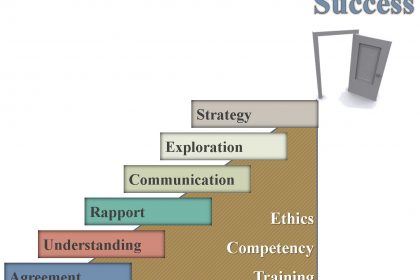
By Bash Sarmiento https://www.instagram.com/kuyabashsarmiento/
Amidst the daily hustle, the power of a simple “thank you,” a well-timed compliment, or a thoughtful gift for employees can be transformative. Building a workplace where recognition and appreciation are woven into the fabric of daily operations can propel a team to new heights.
This isn’t about sporadic gestures of gratitude. It is creating an enduring atmosphere where each success, no matter how small, is noticed and celebrated. Such an environment elevates morale, strengthens commitment, and sparks innovation.
Embrace this culture shift and watch as it revolutionizes your team dynamics. Continue reading to learn more.
The Basics of Recognition and Appreciation
At its core, recognition in the workplace is about acknowledging the efforts and achievements of employees in a meaningful way. Appreciation, on the other hand, extends beyond mere acknowledgment—it involves expressing genuine gratitude for the contributions and qualities of team members.
When effectively implemented, these practices can have a profound impact on an organization.
Data from a Gallup-Workhuman study revealed a statistic that supports the importance of employee recognition. It reported that employees who receive high-quality recognition are 20 times more likely to be engaged than those who receive poor recognition. This engagement shows how connected and committed employees feel to their work and team.
Engaged team members are more productive, more likely to stay with the company, and more motivated to contribute to shared goals.
A well-designed recognition program transforms the core ethos of your workplace into one where every employee feels valued and essential. This foundation of appreciation encourages a positive workplace culture and drives organizational success.
Assessing Your Current Workplace Culture
Before creating a recognition program, it’s crucial to understand the existing workplace culture. This assessment will help ensure that any recognition efforts align well with the employees’ values and needs rather than being perceived as insincere or misplaced.
Todd Nordstrom, a Forbes author, raises an important caveat about recognition: it can potentially do more harm than good if it’s not tailored to the individuals being recognized. This emphasizes the importance of getting to know your people.
Recognition that feels impersonal or misaligned with what employees value most can lead to feelings of underappreciation or resentment rather than motivation.
To effectively assess your workplace culture, consider the following:
- Conducting surveys that unveil how employees feel about current recognition practices. What do they value most in a recognition program?
- Hold focus groups or one-on-one interviews to gather more nuanced insights into the unique motivational drivers and preferences of different team members.
- Use the gathered data to build a solid foundation for a program that hits the mark, creating a sense of value and engagement across the organization.
Setting Clear Goals and Expectations
Once you grasp the status quo, set clear goals and expectations for your recognition program. These goals guide the design and implementation of the program, ensuring it aligns with your broader objectives.
Start by defining what success looks like for your recognition program. Are you aiming to improve employee retention, boost team morale, or increase productivity?
Setting specific, measurable, actionable , relevant, and time-bound (SMART) objectives will help you track the program’s effectiveness and adjust as needed.
For instance, you can aim to increase employee engagement scores by 10% within a year through regular recognition events.
Additionally, you must clearly communicate these goals and the criteria for recognition to all employees. This transparency helps prevent any misconceptions about the program and ensures that everyone understands how they can contribute and be recognized.
It also sets a standard for what kinds of actions and behaviors are valued within the team, reinforcing the desired workplace culture.
Developing a Culture of Recognition
Building a culture of recognition requires more than just occasional gestures. It demands a consistent and systemic approach to recognizing and rewarding employees. Here are some practical steps to embed recognition into your company culture:
- Create Formal Recognition Programs: Establish structured programs like ‘Employee of the Month’ or ‘Innovation Awards’ that regularly highlight individual or team achievements. Make sure these programs are inclusive and varied to cover different types of contributions and achievements.
- Encourage Peer-to-Peer Recognition: Implement platforms or systems that allow employees to recognize their peers. This can be through simple ‘thank you’ notes, digital badges, or a points system that peers can award each other. Peer recognition helps build a supportive team environment and is highly motivating.
- Celebrate Milestones and Successes: Make it a practice to celebrate major milestones, project completions, and personal achievements like work anniversaries or professional advancements. These celebrations can be small or large-scale. The key is to make them consistent and inclusive.
- Leadership Involvement: Ensure leaders and managers actively participate in the recognition program. Their involvement sets the tone for the rest of the team and shows that appreciation is valued at all levels of the organization.
Incorporating these strategies creates a healthy environment where recognition is a regular part of the workplace experience. This boosts morale and enhances employees’ sense of belonging and loyalty to the company.
Conclusion
Howis building a culture of recognition and appreciation so vital for an organization’s long-term success? The answer is deeply rooted in the human desire for connection and respect.
When employees feel genuinely valued, they contribute more and develop a stronger, more creative engagement with their work, driving innovation and inspiring their peers.
If you want to further develop your ability to lead and motivate teams, consider enhancing your skills through professional coaching. The Center for Coaching Certification offers programs designed to amplify your impact as a leader.
Explore how our training can help you foster a more dynamic and supportive workplace. Contact CCC today.




